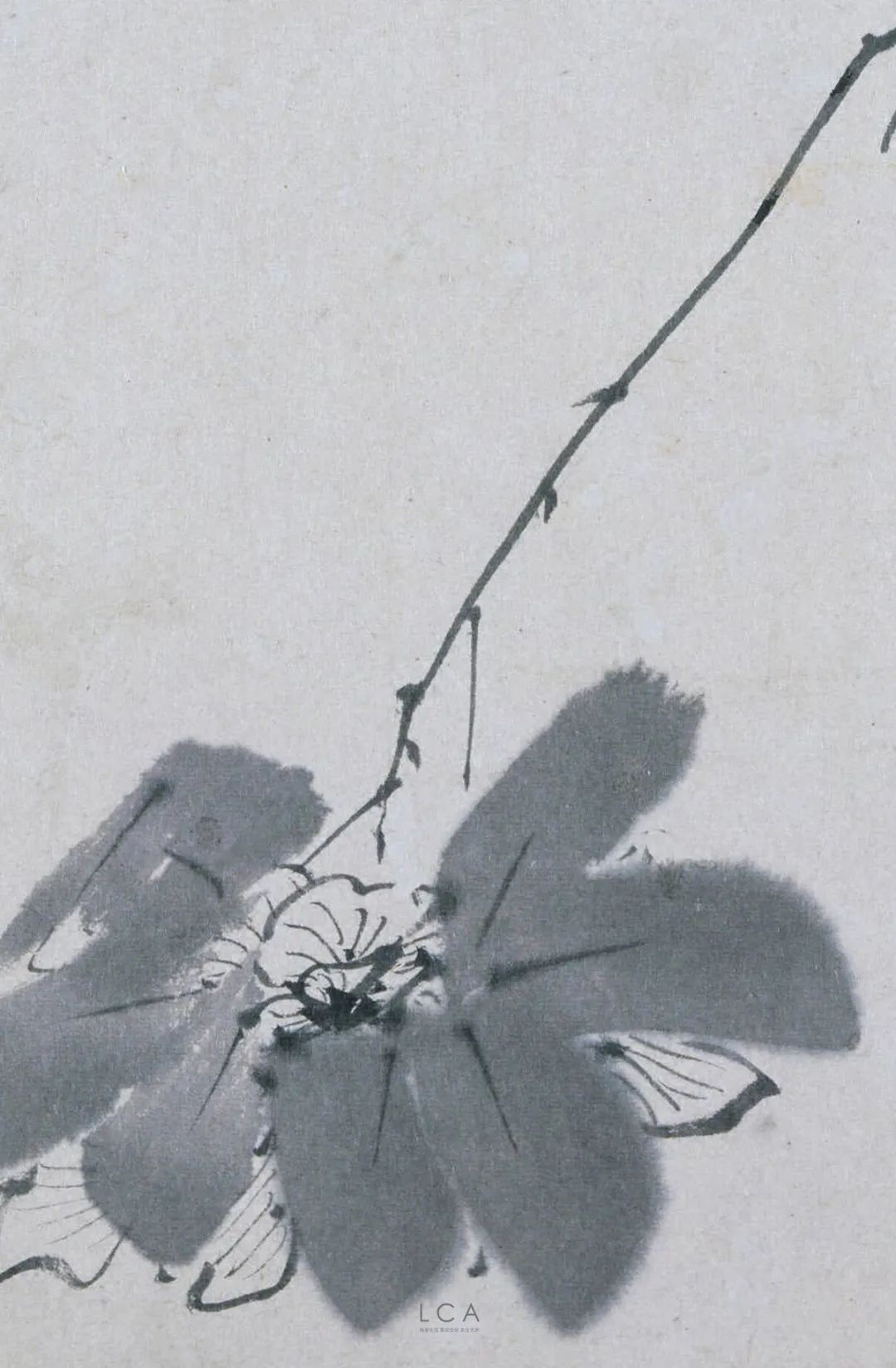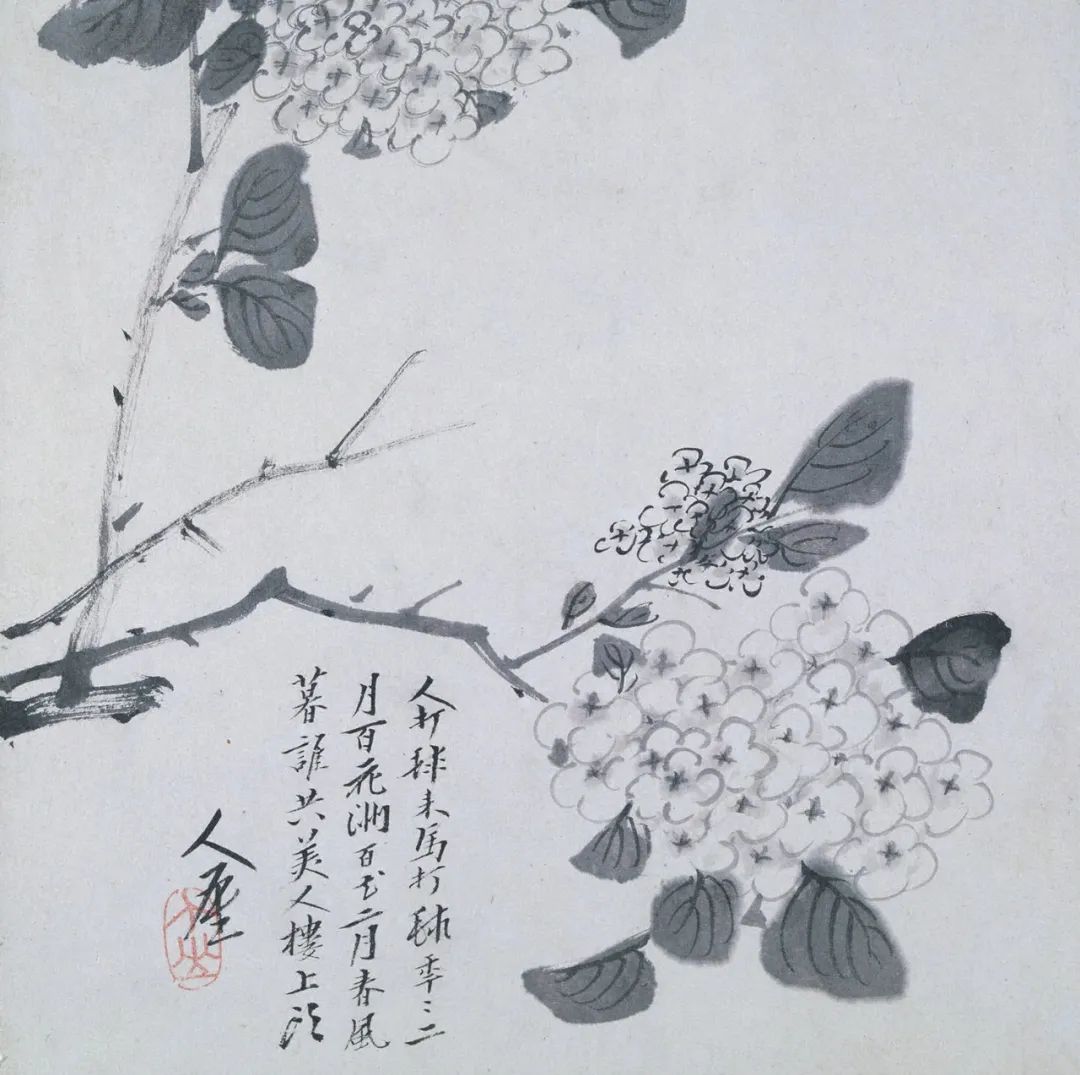The spring of Badashan people
Original moyiao LCA

2024007
A spring
The hydrangea in Baihuazhou is in full bloom. At the end of February, it has been clustered. The gorgeous colors and lovely group patterns make the literati linger and enjoy the beauty beside them.
Back in Nanchang, qìng often set foot in Baihuazhou. In the early spring of this year, he wandered to the bridge and culvert, enjoying the flowers and watching the crowd. He went back to his house and wrote a poem: People play ball with horses, and flowers bloom in February every year. Hundreds of flowers spring in February, who is the beauty upstairs?

Hydrangea figure Badashan people in Qing Dynasty
When he left Gengxiang Hospital and ran to Nanchang, his hometown, Chuan ‘e experienced an epilepsy. Epilepsy was intermittent, and when he had an attack, he tore up his clothes and shouted all the way. Casual children followed him, hiding their faces and sneering. This embarrassment lasted for about half a year.
He didn’t pick up pen and ink until his health improved. The biography of Mao, who got up from loneliness, started a new name, and he left it under the hydrangea in spring, which is called: human house.

Title poem
Chen Ding, a litterateur in the Qing Dynasty, wrote: Badashan people, no house. People who live in a house mean everything in Guangzhou and Xiamen.
Chen Ding’s interpretation comes from the poem of Du Fu, a poet in the Tang Dynasty: There are thousands of spacious buildings, and all the poor people in the world are happy, and the wind and rain are still like mountains. The main idea of the poem is how to have thousands of spacious houses to shelter the poor scholars in the world.
After the ups and downs, it seems reasonable to put the spiritual world in a "human house". However, in this short period before he became an Badashan man, he not only had the name of "human house", but also "donkey house" and even occasionally wrote the word "donkey", just like the inscription of "Bamboo Map". Therefore, if we only understand the "human house" by Chen Dingzhi’s theory, it will be difficult to get a glimpse of the whole picture.

Zhutu Badashan people in Qing Dynasty
In the Tang Dynasty, Zen master Yixuan had the saying that there were Buddha houses, human houses and donkey houses. Liang Zhu, an aesthetician, said that most people say that there is a hierarchy when talking about holiness and Buddha talking about sentient beings. As a result, at the beginning of the initiation, the meaning of equality was lost, while Zen master Yi Xuan regarded the Buddha house, the human house and the donkey house as indistinguishable things, and regarded them as the main principles of Zen.
For Chuanqi, the names of human house and donkey house mean Zen machine, and may also hide their strong will to move towards reality-those who gain Zen theory may not live in Buddhist houses for a long time, settle in secular human houses and donkey houses, but may also move towards sumeru.

Donkey inscription
The next spring, before the first month, the time was roughly similar to today, and there were eight mountain people in the world.
On that day, at the invitation of a friend, Badashan people went to Dongxuan, outside Nanchang, and painted twelve pages (three pages are missing today). The twelve pages of pictures were all accompanied by poems, which were later collected into a book, and today people call it "Miscellaneous Album".

Ganoderma lucidum map Badashan people in Qing Dynasty
In the album, earlier names such as the house of people, the donkey and the mountain all appeared. Significantly, the seal "Badashanren" appeared in the painting for the first time (the earliest so far). Covering the seal, the Badashan people wrote: Jia Zi Chun Zheng, brother of Pingshushe, took it to Dongxuan for painting and inscribed the twelfth.
Jiazi in the inscription is a special year. As one of the main branches, it symbolizes a new beginning, and Badashan people, who are 59 to 59, are about to enter their sixties and a new stage of life. Because of this, he started to write twelve pictures, in which there are noble things such as ganoderma lucidum, bamboo and stone. In addition, he also drew an unusual stubborn rabbit. Perhaps this is the Badashan people.

Tutu badashan people in Qing dynasty
This spring, Badashan people have learned something.
He didn’t visit the boundary between Zen and secular as usual, and he didn’t go to see the gorgeous hydrangea again. Badashanren abandoned other names and only used the name "Badashanren". He knew that what he pursued was not all in the Buddhist house, nor was it all in the human house. He tried to cross with equality and peace of mind.
Original title: "Spring of Badashan People"
Reading source